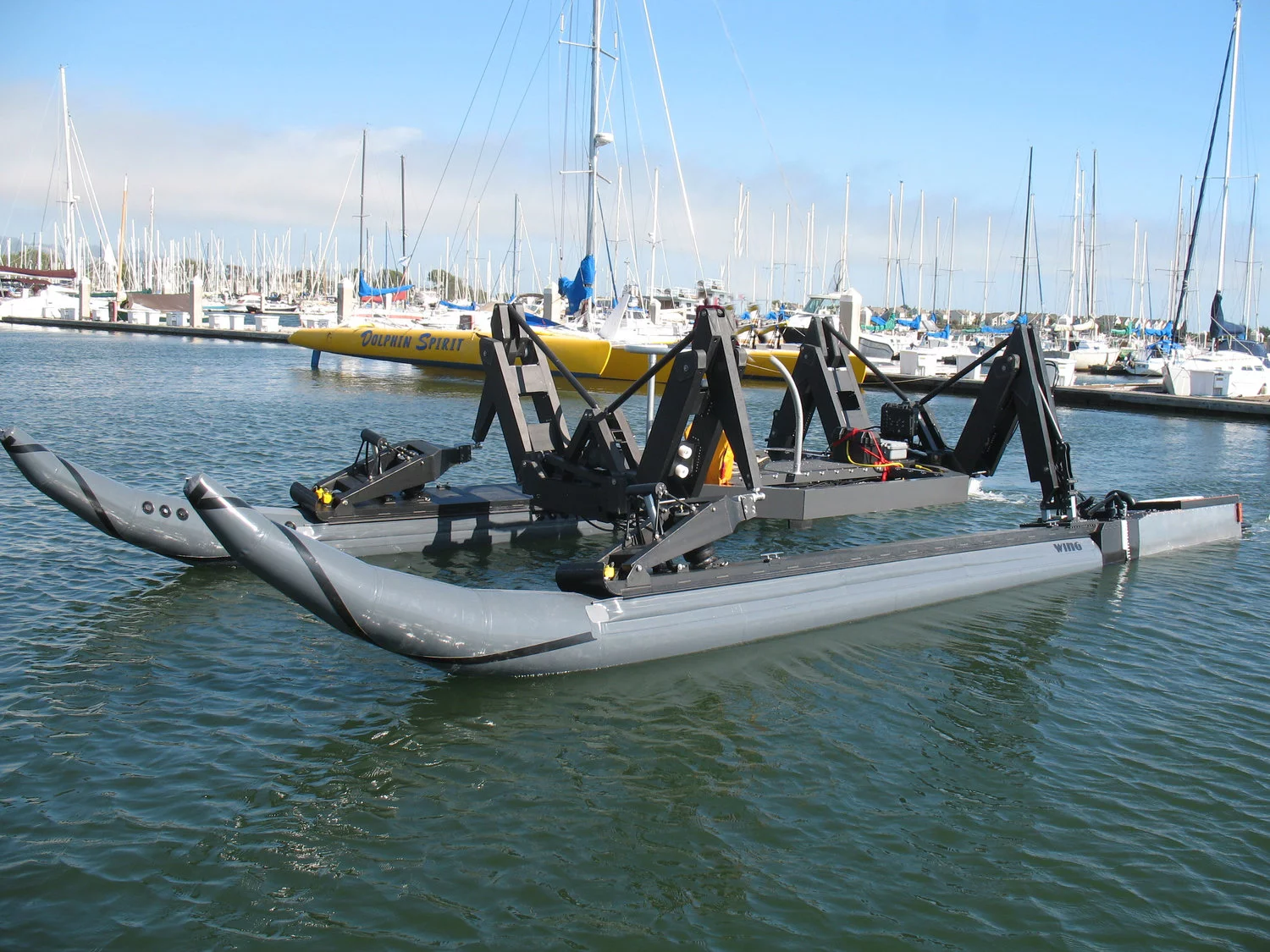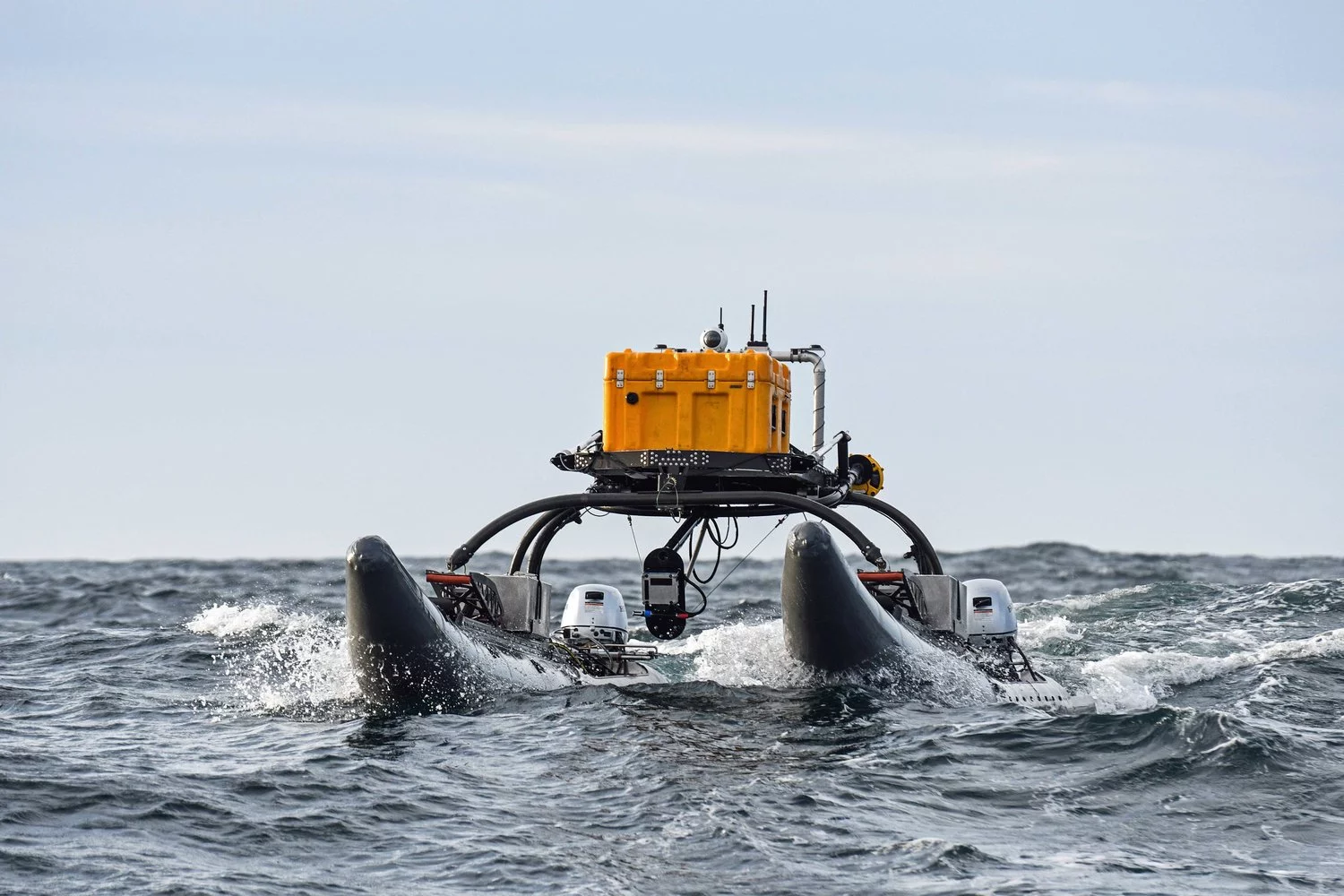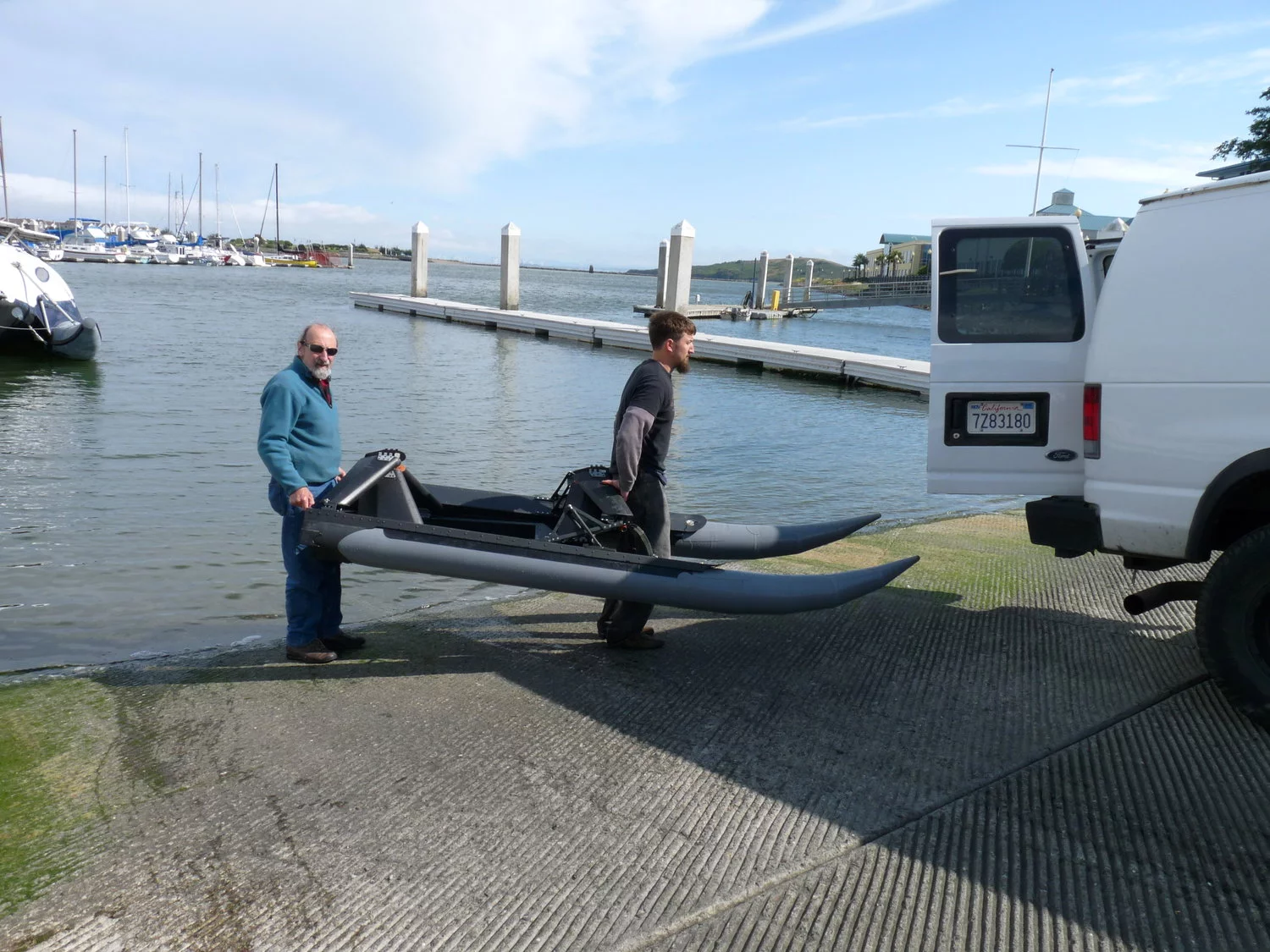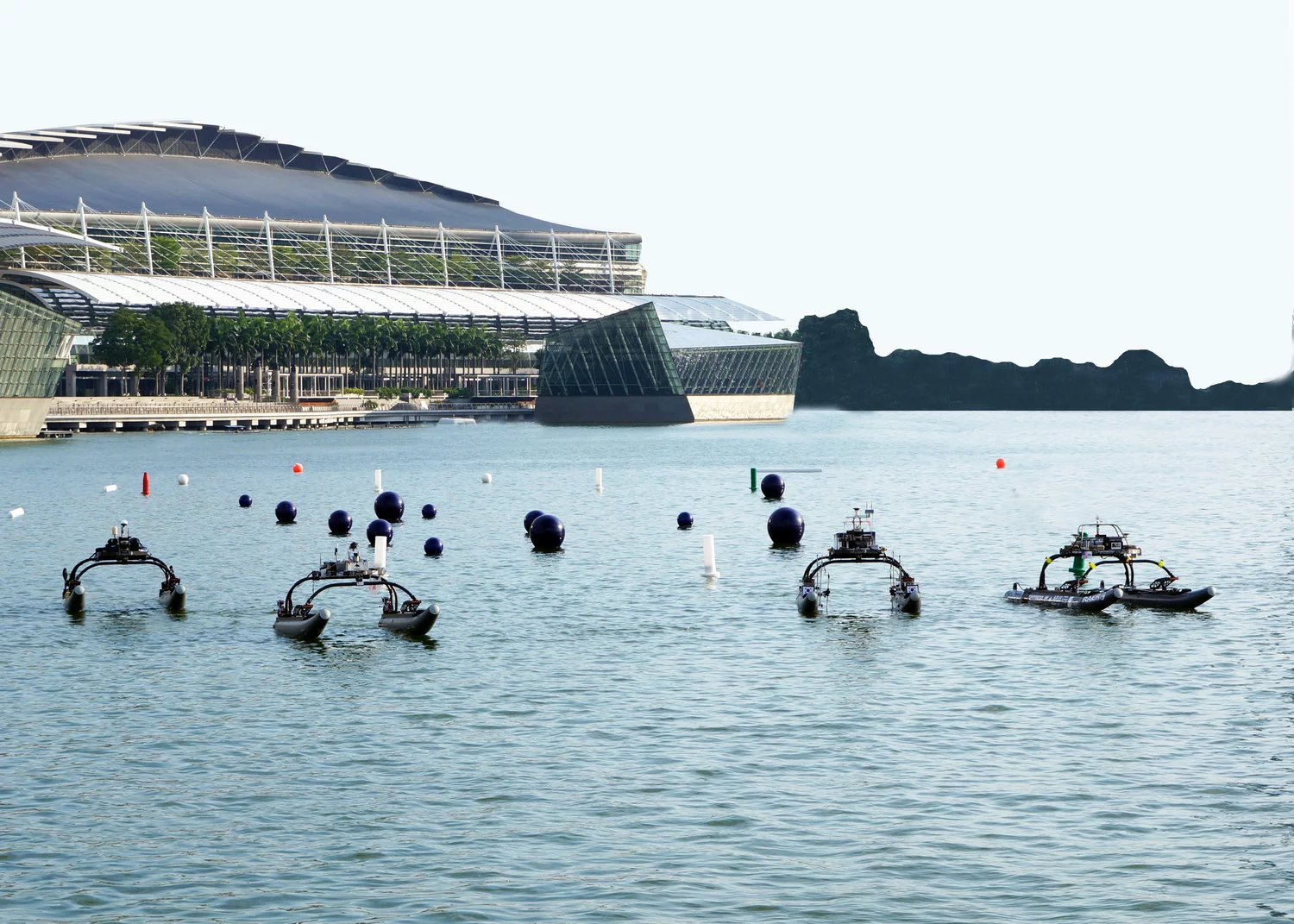California's Marine Advanced Robotics has made considerable progress on its remarkable Wave-Adaptive Modular Vessel (WAM-V) since we first saw these wild spider-boats 16 years ago on a list of urban legends. Legends and photoshops they were not – indeed, the giant 100-ft Proteus laid the foundations for the smaller, smarter machines the company is making today.
In a nutshell, a WAM-V is an ultra-light catamaran with hulls mounted on clever suspension legs that use springs, shocks and ball joints to move with the waves, helping to stabilize them for pitch and roll, and making these boats suitable for sea conditions where others of the same size simply can't operate. With props always in the water, they're highly maneuverable, and capable of spinning 360 degrees almost in their own footprint.
That's the wave-adaptive part; they're also modular, with quick-connect interfaces allowing operators to quickly swap out propulsion systems, payloads and sensor/instrument packages for different missions. And transportable as well, they're built for rapid assembly and disassembly, and they break down so small that four 16-foot WAM-Vs can fit in a standard shipping container. You'd need to deflate a conventional 18-foot RIB to get even one of those in.

If they're big enough, WAM-Vs can run a manned cabin. Otherwise, they can run autonomously, or by remote control. Marine Advanced Robotics has built and delivered a wide range of sizes now, from the imposing 100-ft (30-m) Proteus down to diminutive autonomous 8-footers that can operate in a ridiculous 6 in (15 cm) of water, thanks to this design's super-shallow draft.
Even without disassembling them, they can lower their top platform level with the water, making it easy to change payloads on the fly, or letting people jump aboard. They can also fold their legs right in to make themselves much more compact from side to side if needed. And they can, of course, run on either combustion engines or electric motors depending on the nature of the task at hand.
All of the above makes these things terrific platforms for all sorts of applications in the fields of research, mapping, surveying, asset inspection, defense and robotics research. Since 2014, the WAM-V has been the platform used at the Maritime RobotX challenge, an international student robotics contest focused on co-operative autonomy, in which teams compete to program their boats for a range of different tasks like navigating in response to visual cues, mock search and rescue operations, drone support, self-docking at a designated bay and the like.

Marine Advanced Robotics sells them off the rack in 8-, 16- and 22-ft sizes (2.4, 4.8, 6.7-m), and builds bigger ones bespoke. But the company also hires them out as a service, either solo or in fleets – their quick setup, super-flexible functionality and broad compatibility makes them very easy to plug into marine fleet operations that can be sped up with extra machines in the water.
A fascinating and effective design that still makes us double-take all these years later. Check out a video below.
Source: Marine Advanced Robotics













